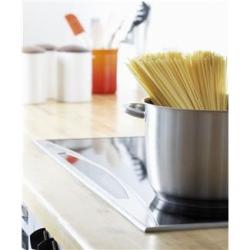Source Institutions
Source Institutions
Add to list Go to activity

In this chemistry activity, learners use spaghetti to explore density and chemical reactions. Learners will discover how a solution of baking soda and vinegar can make spaghetti float and even "dance" in water, whereas it usually sinks. This resource guide includes the formula for the reaction between vinegar and baking soda as well as quick extension ideas. [Activity is publicly available through a web crawler capture on Archive.org.]
- Under 5 minutes
- 5 to 10 minutes
- $1 - $5 per group of students
- Ages 6 - 18
- Activity, Experiment/Lab Activity
- English
Quick Guide
Materials List (per group of students)
- 1 1000-mL beaker or 1 glass mixing bowl
- 10 g sodium hydrogen carbonate or 3 Tsp baking soda
- 45 mL 3% acetic acid or 4-5 Tbsp vinegar
- 10 2-cm pieces of vermicelli
- water
- raisins or mothballs (optional)
- food coloring (optional)
Subjects
-
Physical Sciences
-
Chemistry
- Chemical Reactions
-
States of Matter
- Gases
-
Structure and Properties of Matter
- Volume and Density
-
Chemistry
-
The Nature of Science
-
The Scientific Process
- Conducting Investigations
-
The Scientific Process
Informal Categories
- Food and Cooking
- Science Festivals Activity
Audience
To use this activity, learners need to:
- see
Learning styles supported:
- Involves hands-on or lab activities
Other
Components that are part of this resource:
This resource is part of:
Access Rights:
- Free access with registration
